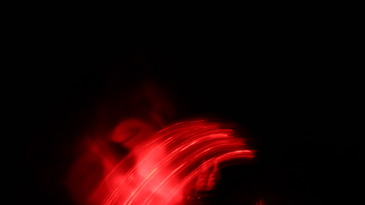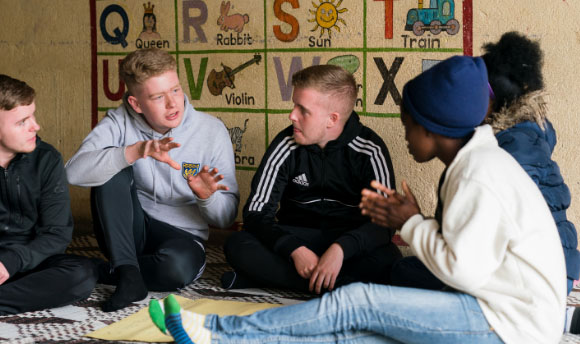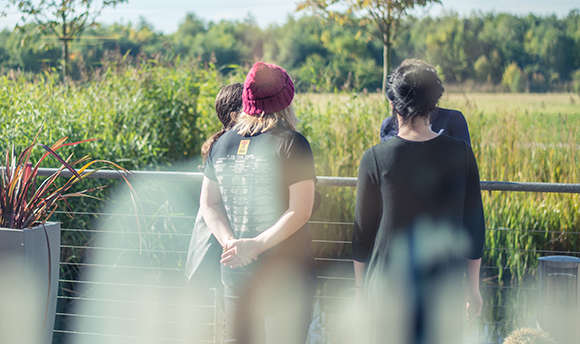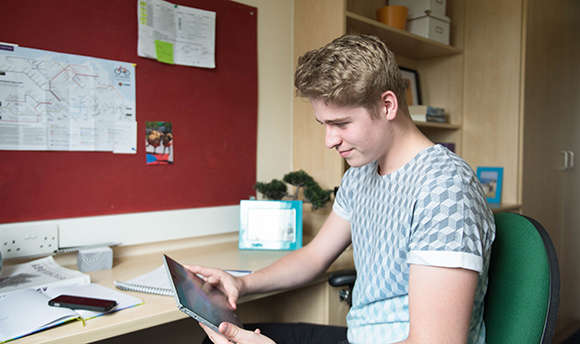Blog Author - Regina Mosch
My practice research begins where a traumatic experience collides with artistic processes: I creatively examine the tensions and ethics inherent to encountering traumatic memory in co-creative, experimental documentary film. At the centre lies the exploration of embodied, subjective and sensory ways of experiencing queerphobic microaggressions resulting in gender-based traumatic stress, and it is – as scholar Lindner suggests, those ‘unruly, sticky, numbing, exhilarating, frustrating, agitating and affirming resonances’ that emerge in the encounters between bodies, film and theory which I am seeking out.
I have been interested in researching the (in)visibility and (un)representability of trauma for a long time, but it was a report on Practice Research by Bulley & Sahin’s that provided the most apt words for thinking about it: they tell us that practice research has the ability to reveal ‘often unrecognised ways of knowing’ and embrace sensory, embodied, tacit as well as affective expressions of knowledge. ‘Unrecognised’ means several things to me: not seen, not expressed, not understood, not communicated. A traumatic memory can be such an instance of unseen knowing: being confronted with an extreme affective experience, such as the exposure to queerphobic microaggressions, the brain rather than processing it cognitively transforms the experience into a bodily sensation – Jill Bennet argues this often resists clear narrative and verbal representation. Engaging with such invisible, deeply fragmented and ruptured knowledge in art poses further critical questions around politics and ethics of representation: who looks at whom, who represents whom and owns this representation?
Micro-aggressions are described as brief moments of human interactions – verbal or bodily – that communicate bias and prejudice. Because of their brevity, inconspicuousness or unintentionality they often go unnoticed as instances of violence both for those who experience them and those who commit them, which makes long-term exposure to them a type of trauma that is still largely invisible in itself. The reason I want to study them is, on the one hand, that I am interested in looking more deeply at this particular invisibility (what is it that we do not see? why are microaggressions still widely ‘unrecognised’?) and, on the other hand, that I have experienced them myself and not realised it for a long time. What I did realise, then, was that the harm that is done while something is not seen is unimaginably big.
To explore this, I combine my identities as filmmaker and practice researcher with cultural trauma studies and queer feminist film theory. The co-creative development of the film will function as the primary mode of inquiry: I aim to (re)locate knowledge that is in the body but also produced by the body by developing and examining an expanded co-creative filmmaking method, which allows for a collaborative, non-hierarchical documentary space to take shape. In other words, I am basically using film to study what traumatic memory feels like in someone’s body, but also what it feels like to encounter it in film. I am studying this not to find definitive representations and clear-cut explanations for traumatic memory of microaggressions, but precisely to communicate and give space for the complicatedness, for the frictions and entanglements of this memory in our bodies.
Centring film in this exploration is intuitive firstly because I am an experimental filmmaker and have connected to its poetry, its ability to capture invisible moments and sensations for a long time. Secondly, film language, arguably like no other art form, is able to represent the traumatic temporality in a plastic and sensory way. Film has an intrinsic connection to the imagery of traumatic memory with its fragmentation, uncertainty, non-linearity and recurrence: you can jump in time and space, distort images in colour and shape, make them surreal and ambiguous or crystal-clear and harsh. The sonic dimension of film, in particular soundscapes and design, can be a further way to arouse a (multi)sensory experience beyond the visual.
And so, it is the fluidity of both practice research and artistic practice that is useful for me, as, in my opinion, trauma can be most constructively explored through a means that allows for fluidity – that is indeed fluid – because trauma inherently is not static. As Atkinson & Richardson tell us, understandings of trauma are kaleidoscopic and constantly change, so our methods of researching them need to be flexible as well.

As a first study, I have turned the camera lens on my own vulnerability, so in a way exposed myself to the ‘academic rigour’ that I intend to expose other people to later on. Heavily inspired by the haptic visuality devised by Laura U. Marks, I developed the photography-film-sound piece what it felt like to dream fire in which I retrace the memory of a traumatic experience I had some years ago. The basis of the piece are a series portraits shot as long exposures and lit in fiery red lighting, in which my face resembles an uncanny dream figure that appeared in one of my dreams at the time. This red texture spills into staged, mundane scenes that are pervaded by an almost glowing line illustrating the disrupted state of mind that the aftermath of a traumatic experience puts you in. Combined with a sensory soundscape I have found that this photographic haptic imagery can do several things:
It can make visible – and hence allows us to witness – something that has not been visible before.
It shows the different modes of being of a traumatic state.
It can create an encounter with the bodily sensation of a traumatic memory.

Reflecting on the creative process and the photographic artefacts it becomes obvious that a sensory-affective engagement with the force of trauma provokes our notions of (research) agency: how can I do research about something within me that is hidden and unrecognised? What does it mean for my agency as a researcher when the knowledge I produce is fractured and eludes words, and arguably, representation?
And so, in my first couple of months. I have tentatively sketched out that it is those in-between spaces – between bodies engaged in an artistic process, but also between text and body, and research and artistic practice – where a new sense of political agency in documentary filmmaking takes shape: one that comes from the silence, from the vulnerability and from a traumatic landscape that both ruptures and connects, and produces knowledge from within embodied artmaking rather than from the removed place of a transcendental observer.
As a next step, we will screen what it felt like to dream fire to different audiences and play with exhibition techniques in order to see how screening a film in specific spatial contexts can further tell us something about the perception of trauma. The upcoming research seminar (15 June, 3 – 4pm) will take an experimental gaze at presenting our findings on traumatic memory and embodied knowledge in film: For more information, please visit our Eventbrite Page
To take a peak at the photographs of what it felt like to dream fire

If you want to see the piece in its filmic form, please email me: RMosch@qmu.ac.uk







